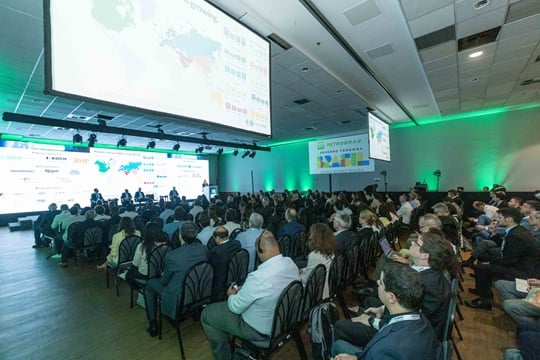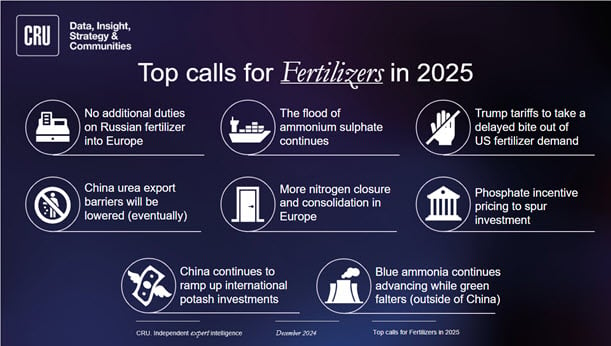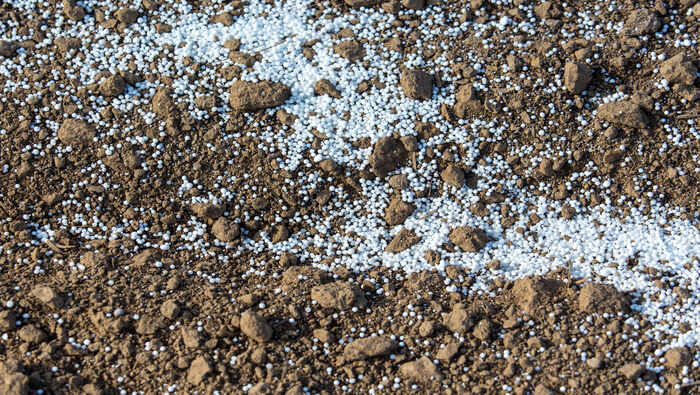Although potassium chloride (MOP) will remain the primary source of K2O nutrient consumption over the long term, potassium sulphate (SOP) is the principal alternative potassium-based fertilizer consumed by farmers today. This is mainly due to its low levels of chloride, but also the presence of sulphur nutrients and the more ample availability of soluble forms of the product.
Most crops have some degree of sensitivity to chloride, which can have detrimental effects on crop quality (size, weight, colour, shape, taste, etc.) but some ‘premium’ crop categories such as fruits, vegetables, tree nuts and tobacco have particularly high levels of chloride sensitivity. Approximately 20% of the world’s harvested area is used to cultivate chloride-intolerant crops, and chloride sensitivity can be a particular issue in regions with little rainfall and/or poor drainage, as chloride can accumulate in the soil.
In addition, although sulphur has historically had little value as a crop nutrient, demand for sulphur-containing fertilizer products has seen a notable increase over the last 20 years. This is due to a decline in incidental sources of sulphur in soils (e.g., via industrial SO2 emissions), as well as increasing levels of agronomic education and soil testing in emerging agricultural economies.
As we see continued increases in overall K2O demand globally (1.8% CAGR from 2023-50) – driven by a rebalancing of nutrient consumption ratios away from nitrogen in key fertilizer-consuming countries such as China – we expect the share of K2O consumption accounted for by SOP to at least maintain its historical average of 8-9%. Although the relative abundance and lower cost of MOP supply should continue to support its consumption growth over the long term, the expansion of fruit and vegetable crop areas in key markets such as China – and developments in farmer agronomic knowledge in emerging agricultural centres such as Africa – should together enable SOP to maintain its share of potassium nutrient demand.
CRU uses supply gap analysis to forecast the long-term global capacity requirement in the SOP industry. This is defined as the gap between our long-term global SOP demand forecast, and global SOP capacity at the end of the medium-term forecast in 2029. This is the point until which we are able to predict the timing and volume associated with individual projects in our pipeline.
A key area of uncertainty in the long term is the extent to which Chinese SOP supply should be taken into account in a global market balance. On the one hand, Chinese exports of SOP reached a peak in 2020 of nearly 400 kt. At the time, this made it the joint second largest SOP exporter in the world. However, export controls in China have been in place since mid-2021 due to concerns about food security and high domestic prices. They were intensified in October 2021, and yet further intensified in January 2025. Total Chinese exports for 2025 are expected to total only ~75 kt.
As a result, our long-term view of the SOP industry needs to take into account both scenarios – one with Chinese participation in the global traded market and the increased SOP supply availability that results from this, and another where the duration and severity of SOP export controls in China do not subside, and the country virtually functions as a separate, self-contained market.
In our recently produced Potassium Sulphates Long Term Special Report, we show global SOP supply/demand balances with and without Chinese capacity and demand being accounted for in the global picture. This includes analysis of the specific years in which the global market is set to balance, with and without Chinese participation, and the accompanying long-term price forecasts associated with each scenario. Our analysis is underpinned by an overview of long-term demand drivers, key demand-related risk factors, and an evaluation of regional SOP demand dynamics.
We look forward to exploring how CRU Consulting can help you deepen your understanding of SOP industry dynamics, supply/demand balances under different China-related scenarios, and implications for long-term pricing.
You can find out more about CRU’s long-term outlook for the SOP industry in the CRU Potassium Sulphates Long Term Special Report. If you are interested in this report, please reach out to us here.

















